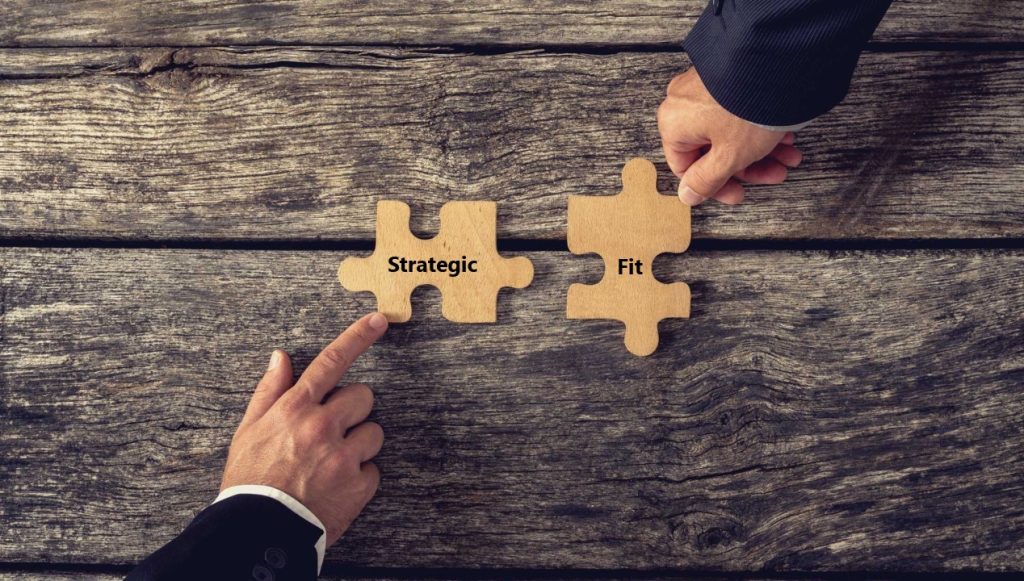
The concept of strategic fit is grounded in the idea that a company’s internal capabilities—such as skills, resources, and processes—must match the demands and opportunities of its external environment. Without this alignment, even the best-laid plans can falter. The Strategic Fit Model allows businesses to take a holistic approach to strategy development. It does this by considering both internal and external factors. The model provides a roadmap for aligning organizational strengths with the right market opportunities, thereby increasing the likelihood of achieving sustainable competitive advantage.
The Importance of Strategic Fit
Strategic fit is crucial because it allows a company to utilize its resources in ways that complement its market environment. When companies achieve a strong strategic fit, they optimize their performance, minimize waste, and reduce risk. On the other hand, a poor strategic fit can lead to inefficiencies, misallocation of resources, and ultimately, failure to achieve desired outcomes. Therefore, understanding the Strategic Fit Model is critical for business leaders aiming to navigate complex markets.
Additionally, strategic fit encourages businesses to focus on their core competencies—those unique strengths that differentiate them from competitors. By aligning these competencies with market demands, companies can ensure that they are not only meeting customer needs but also delivering superior value. This alignment increases the chances of long-term success in dynamic and competitive markets.
Internal Resources and Capabilities
One key aspect of the Strategic Fit Model is assessing internal resources and capabilities. These include a company’s tangible and intangible assets, such as financial resources, human capital, technology, and brand equity. Understanding the Strategic Fit Model requires businesses to perform a thorough internal analysis to identify strengths and weaknesses. A company with strong financial reserves, for example, may be better positioned to invest in innovation and growth opportunities. On the other hand, companies lacking in critical resources may need to consider alternative strategies, such as partnerships or acquisitions, to fill gaps in their capabilities.
The model also highlights the importance of aligning internal culture with strategic goals. A company with a culture that embraces innovation, for example, may be better suited to pursue strategies focused on product development. Conversely, an organization that prioritizes operational efficiency may focus on cost leadership strategies. In both cases, the company’s internal resources and culture must support the chosen strategy for it to succeed.
External Environment Analysis
While internal resources are critical, the external environment plays an equally important role in determining strategic fit. The Strategic Fit Model emphasizes the need to analyze market conditions, including competitive forces, customer preferences, and technological trends. The Strategic Fit Model involves recognizing that external opportunities must be aligned with a company’s capabilities to ensure success. A company that excels in digital technology, for example, may find greater opportunities in markets that are rapidly adopting technological solutions.
Additionally, external threats must be considered. The Strategic Fit Model encourages businesses to identify potential risks in the market, such as new competitors, regulatory changes, or shifts in customer preferences. By anticipating these challenges, companies can develop strategies that mitigate risk and capitalize on emerging opportunities.
Achieving Strategic Fit Through Adaptability
Adaptability is essential for achieving strategic fit in today’s rapidly changing business environment. Businesses that fail to adapt to new trends or changing customer needs can quickly lose their competitive edge. The Strategic Fit Model encourages companies to remain agile and continuously assess their alignment with the market. This requires ongoing evaluation of both internal resources and external conditions to ensure that strategies remain relevant.
For example, a company that initially focused on traditional retail may need to shift its strategy toward e-commerce as customer preferences change. In this case, the Strategic Fit Model allows the business to realign its resources—such as digital marketing and logistics capabilities—to meet the demands of the new environment. By staying flexible, businesses can maintain a strong strategic fit even in dynamic markets.
Challenges in Achieving Strategic Fit
While the Strategic Fit Model provides a valuable framework, achieving perfect alignment between internal resources and external opportunities can be challenging. One of the biggest obstacles is the inherent uncertainty in business environments. Markets can change rapidly due to technological advances, shifts in consumer behavior, or unexpected economic conditions. Understanding the Strategic Fit Model requires businesses to remain vigilant and responsive to these changes.
Another challenge is the complexity of aligning diverse elements within an organization. Large companies, in particular, may struggle to ensure that all departments and functions are working toward the same strategic goals. Leaders must communicate effectively to overcome these challenges and ensure all parts of the organization align with the overall strategy.
Moreover, businesses must balance short-term needs with long-term goals. A company may need to make trade-offs, such as investing in new technology that could disrupt current operations but yield long-term benefits. The Strategic Fit Model helps businesses make informed decisions by evaluating the potential impact of these trade-offs on both internal resources and external opportunities.
Strategic Fit and Competitive Advantage
Achieving strategic fit is not just about aligning resources; it’s also about gaining a competitive advantage. A company with a strong strategic fit is more likely to outperform its competitors because it can efficiently leverage its strengths to meet market demands. This alignment allows businesses to differentiate themselves from competitors, whether through cost leadership, product innovation, or customer service excellence. Understanding the Strategic Fit Model helps companies identify how they can best position themselves in the market to achieve sustainable competitive advantage.
Furthermore, strategic fit enhances organizational efficiency. When companies align their internal resources with external opportunities, they minimize waste and reduce inefficiencies, which leads to higher profitability. This not only improves the company’s bottom line but also strengthens its position in the market.
In conclusion, the Strategic Fit Model is crucial for any business seeking long-term success. By aligning internal resources with external market opportunities, companies can maximize efficiency, minimize risk, and achieve sustainable competitive advantage. The model provides a comprehensive framework for evaluating both internal capabilities and external conditions, helping businesses make informed strategic decisions. As markets continue to evolve, maintaining a strong strategic fit will remain a critical factor in ensuring organizational success.

